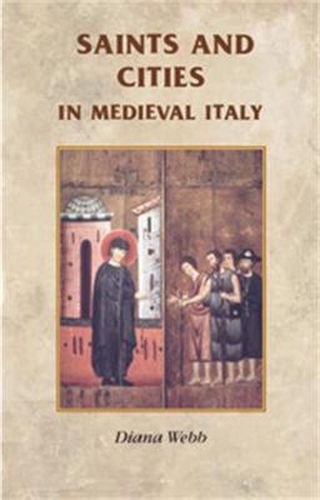Readings Newsletter
Become a Readings Member to make your shopping experience even easier.
Sign in or sign up for free!
You’re not far away from qualifying for FREE standard shipping within Australia
You’ve qualified for FREE standard shipping within Australia
The cart is loading…






The saints’ Lives in this book were written in Italy in the thirteenth and fourteenth centuries. Here translated into English and in full for the first time, they shed light on the ways in which both lay men and women sought God in the urban environment, and how they were understood and described by contemporaries. Only one of these saints (Homobonus of Cremona) was formally canonised by the Pope: the others were locally venerated within the communities which had nurtured them. Raimondo Palmario of Piacenza, contemporary with Homobonus, was remembered as both pilgrim and a vigorous exponent of practical charity. The nobleman Andrea Gallerani of Siena turned from a life of violence to good works, while another Sienese, the holy comb-seller Pier Pettinaio, exemplified the godly business man who insisted on the just price and on paying his taxes. Two very different women are included: Umiliana de'Cerchi of Florence, a widow with children, and the ‘servant-saint’ Zita of Lucca. The last of the Lives contains a bishop’s account of how the cult of the humble Rigo was launched in Treviso in 1315. The book will welcomed by students and other readers interested in medieval Italian cities during this period of growth and vitality, and in how the religious life was lived in urban settings.
$9.00 standard shipping within Australia
FREE standard shipping within Australia for orders over $100.00
Express & International shipping calculated at checkout
The saints’ Lives in this book were written in Italy in the thirteenth and fourteenth centuries. Here translated into English and in full for the first time, they shed light on the ways in which both lay men and women sought God in the urban environment, and how they were understood and described by contemporaries. Only one of these saints (Homobonus of Cremona) was formally canonised by the Pope: the others were locally venerated within the communities which had nurtured them. Raimondo Palmario of Piacenza, contemporary with Homobonus, was remembered as both pilgrim and a vigorous exponent of practical charity. The nobleman Andrea Gallerani of Siena turned from a life of violence to good works, while another Sienese, the holy comb-seller Pier Pettinaio, exemplified the godly business man who insisted on the just price and on paying his taxes. Two very different women are included: Umiliana de'Cerchi of Florence, a widow with children, and the ‘servant-saint’ Zita of Lucca. The last of the Lives contains a bishop’s account of how the cult of the humble Rigo was launched in Treviso in 1315. The book will welcomed by students and other readers interested in medieval Italian cities during this period of growth and vitality, and in how the religious life was lived in urban settings.